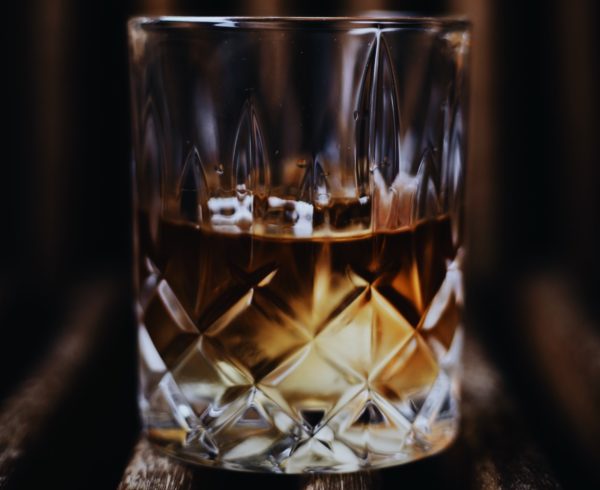Rum has gradually become one of the most prevalent spirits in the industry. With centuries of history behind it, this drink continues to evolve and reinvent itself.
One of the allures of rum, aside from its unique taste and texture, is how long it lasts in storage. Compared to some other spirits, rum has a very long shelf life.
Do you have a bottle of rum that’s been sitting on your liquor display for a while? Chances are, it’s still good to drink. Its flavor may have been altered slightly due to air exposure, but it should be safe to consume. Unlike many other foods and drinks, when rum is exposed to air, it doesn’t rot; its makeup simply changes.
Rum is a distilled spirit, meaning it’s stable alcohol. Stable alcohol can be stored for years at a time and still be drinkable. Even if the bottle has been opened, it will still be safe to drink after a few years. It may not taste the best, but at least it won’t make you sick.
The long shelf life is one of the many perks of buying rum. To learn more about rum and how it ages, keep reading below with Saucey.
How long does rum last
How long does rum last exactly? Well, the answer to this question can be affected by several factors, like how your rum is bottled and stored.
If unopened and properly stored, the flavor of your rum can hold up for over twenty years. The taste will likely have changed slightly in that time span, but it should still be good to drink.
If the bottle has been opened, its aging process speeds up dramatically. It may not even last a year or two before the flavor is changed entirely.
Once your rum’s taste has been altered, you may notice that it is sour, watered down, or weak. You may not feel the same effects of the alcohol as if you drank it when it was first bought.
Now, it is important to note the difference between aged rum and exposed rum. The flavor profile of rum can be enhanced by aging it in oak barrels after it’s distilled. But this type of aging is not the same as just storing a bottle in your cabinet.
The Rum’s flavor improves in the barrel because the vessel’s oak matures the spirit. For your rum to age properly, it must be in contact with the grain of this wood. Once it’s bottled, it cannot be aged more.
You should also keep in mind that these guidelines only apply to pure rums. Flavored rums like coconut rum tend to deteriorate faster than pure rums.
If your bottle isn’t 80 proof, it’s most likely a rum-based liqueur, which usually only sustains its original flavor for a few months. An example of rum-based liqueur is RumChata, which only tastes good within around a year of being bottled.
How to properly store Rum
Storing rum is just like storing any other spirit. The proper way to store a bottle of rum is to keep it in a cool, dry, shut, air-tight container. You can use a liquor cabinet, or you can use a plastic storage container. Just make sure there is minimal airflow getting into whatever you’re storing it in.
Your place of storage should be cool but not cold. Do not refrigerate your rum, and do not try to freeze your rum. Keep your rum in an area that stays slightly below room temperature.
Don’t store your rum with a pourer on the bottle, either. If the bottle isn’t tightly sealed, the liquid inside will begin to evaporate. Alcohol evaporates quicker than water does, so this process will turn your rum milder.
Oxidation also occurs when air gets into the bottle, which can mess with the liquor’s flavor. If sealed, it’ll take at least a few years before these two processes start changing the flavor, but it can happen within a few months if opened.
If you’ve opened your bottle already, make sure to keep it closed whenever you’re not using it. There’s no reason to let your rum deteriorate for no reason. Put that lid on.
You can also pour the remaining alcohol from your opened bottle into a smaller bottle to decrease the amount of air that gets in.
How to tell if your Rum is bad
As mentioned already, rum doesn’t really go bad. But if you want to check if your rum has changed in taste, you can put your nose up to the bottle and smell it. A rum that has changed should smell funky. If your rum doesn’t carry an unfamiliar, pungent scent, it should probably be good to drink.
You should also look for any visual signs that your rum has changed. Are there any spots in your liquor? Has the color remained the same since the last time you saw it? Has it maintained its consistency?
If you’ve taken both of these steps and still are unsure if your rum is good or not, you can taste it. Pour out a small sample size of the rum. Swig it around in your mouth a bit and look for any unusual tastes or textures.
You should always take these precautions before serving some old rum to your guests. You might not make your company sick, but you can definitely gross them out.
Even if your rum has changed in taste, you technically can still drink it. If you still enjoy its flavor, feel free to drink up. If you dislike the new taste, though, you can discard the bottle.
Rum aging process
So how is rum actually aged? As mentioned, it is aged in oak barrels. Oak produces a superior product to other barrels like whiskey and bourbon. Light flavors, colors, and textures can be added to the drink when rum interacts with these woods.
Sometimes, these barrels are charred with small bumps to encourage a more potent interaction between the wood and the rum. The size of the barrel also plays a factor. Typically, smaller barrels age rums faster than bigger barrels.
But each different type of rum is aged differently. For instance, clear rums like Bacardi Silver or Don Q Cristal are aged for at least a year, which gives them their smoothness. They are then carbon filtered to correct the color, which is affected while aging.
Every rum brand uses a different aging formula, but these are the standards for most. Rums can be aged for over twenty years.
Rum’s long history
The main ingredient that rum is made from, sugar cane, was first cultivated in 8,000 BC in the island of New Guinea, which is located in the western Pacific Ocean, north of Australia. It was first fermented in India around 350 BC.
Sugar cane was first fermented many centuries later in India around 350 BC. At first, rum was used as a medicine. Only centuries later would it become a recreational drink.
In the 1400s, European explorers started to open up trade routes around the world. They discovered many remote islands on their paths, which would later become bases for sugar cane plantations.
Sugar was always a very sought-after commodity on the trade route. However, it took extreme effort to grow. Not only do you need a ton of water, but you also need a lot of manpower.
No one was willing to take on the task of growing sugar cane until the mid-1600s, when about 3,000 British colonists migrated to New England. They were essentially forced to grow sugar cane, as it was the only viable crop for the area’s harsh climate.
They also started to run out of beer, which was exclusively imported from England. As a result, rum was born. It was a cheaper and stronger alternative to brandy, which made it very popular in the colonies.
The takeaway
Knowing the proper storing method for spirits and the timetable for its flavor is imperative with how expensive Rum can get. Rum might sour or lose the complexity of flavor, but you usually don’t have to worry about it going bad. For the best results, be careful not to allow your rum to be exposed to air.
Don’t be scared to stock up on your rum. As we’ve learned today, it basically lasts forever. If you ever get your hands on a limited or exclusive bottle, you won’t have to worry about it spoiling.
It’s no surprise why this drink is so popular. It tastes great, it’s strong, and it lasts a lifetime. Who can argue with that?




